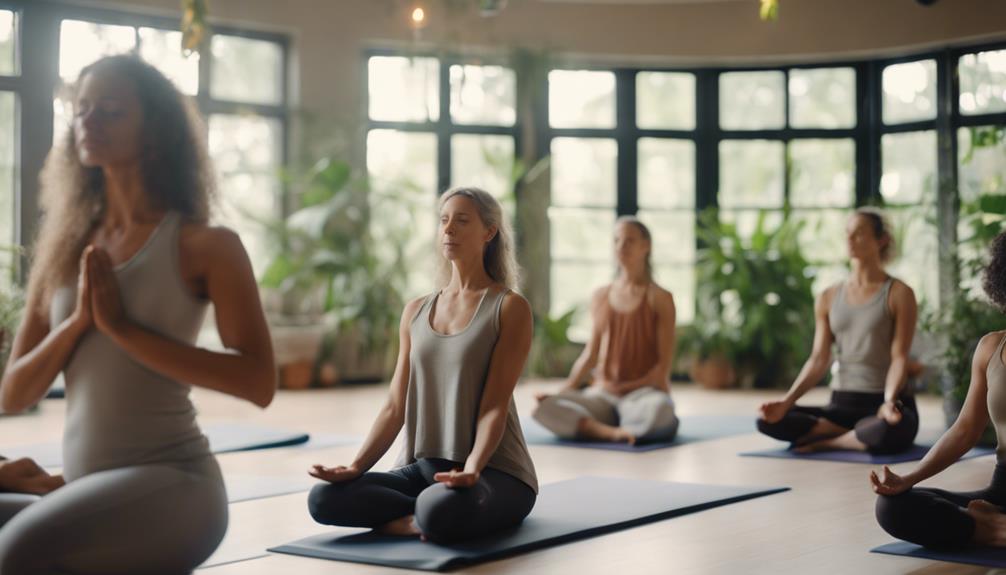Yoga For Arthritis

Arthritis is a condition that affects millions of people worldwide, often leading to pain, stiffness, and reduced mobility. While traditional treatments can provide relief, many individuals are turning to alternative therapies for holistic healing. One such method is yoga for arthritis, which has gained popularity in recent years. In this blog post, we will explore how yoga can be a beneficial practice for those living with arthritis, the different types of yoga suited for arthritis sufferers, and practical tips for incorporating yoga into your routine.
Understanding Arthritis and Its Impact on Daily Life
Arthritis is an umbrella term that encompasses over 100 different types of joint diseases, with osteoarthritis and rheumatoid arthritis being the most common. Symptoms can vary but often include joint pain, swelling, and stiffness, significantly affecting a person’s quality of life. Daily tasks, such as walking, climbing stairs, or even gripping objects, can become challenging. This is where yoga for arthritis comes into play, offering a gentle and effective way to enhance mobility and reduce discomfort.
The Benefits of Yoga for Arthritis Sufferers
Yoga for arthritis provides numerous benefits that can improve overall well-being. Firstly, it promotes flexibility and strength, which are essential for maintaining joint function. The various poses and stretches help to strengthen the muscles surrounding the joints, providing better support and stability. Secondly, yoga encourages relaxation and stress reduction, which can be particularly beneficial for individuals dealing with chronic pain. The mindfulness aspect of yoga helps to shift focus away from discomfort, allowing for a more positive mental state. Finally, practicing yoga can enhance circulation, further aiding in joint health and mobility.
Types of Yoga Suitable for Arthritis Patients
When considering yoga for arthritis, it’s important to choose the right style. Gentle yoga styles, such as Hatha, Yin, or Restorative yoga, are particularly beneficial. Hatha yoga focuses on basic postures and breathing techniques, making it accessible for beginners. Yin yoga involves holding poses for extended periods, promoting deep relaxation and flexibility. Restorative yoga uses props to support the body in various poses, allowing for complete relaxation and gentle stretching. These styles can be adapted to individual needs, ensuring that practitioners engage without pushing their limits.
Related Posts:
Essential Yoga Poses for Arthritis Relief
There are several specific yoga poses that are particularly effective for arthritis relief. Some key poses include:
1. Cat-Cow Stretch: This gentle flow between two poses helps to increase flexibility in the spine and relieve tension in the back and neck.
2. Child’s Pose: A restorative pose that stretches the back and hips, providing a calming effect while releasing tension.
3. Seated Forward Bend: This pose stretches the hamstrings and lower back, promoting relaxation and flexibility.
4. Legs Up the Wall: A restorative pose that encourages circulation while relaxing the lower back and legs.
These poses can be modified based on individual comfort levels, ensuring that all participants can practice safely.
Creating a Safe Yoga Practice for Arthritis
Safety is paramount when practicing yoga for arthritis. It’s essential to listen to your body and avoid any movements that cause pain or discomfort. Here are some tips for creating a safe yoga practice:
– Consult a Healthcare Provider: Before starting any new exercise regimen, including yoga, consult with a healthcare professional to ensure it’s appropriate for your condition.
– Start Slow: Begin with shorter sessions and gradually increase the duration and intensity as your body becomes accustomed to the practice.
– Use Props: Incorporate props such as blocks, straps, and bolsters to modify poses and provide additional support. This will help you achieve the desired alignment without straining.
– Choose the Right Instructor: If you’re attending a class, look for instructors who have experience working with individuals with arthritis or chronic pain conditions.
Integrating Breathing Techniques into Your Yoga Routine
Breath control is a crucial component of yoga for arthritis. Practicing breathing techniques can enhance relaxation, reduce stress, and improve overall well-being. Techniques such as diaphragmatic breathing and alternate nostril breathing can be particularly effective. Deep, intentional breathing helps to calm the nervous system and can even alleviate some pain sensations. Incorporating these techniques into your yoga practice allows for a more holistic approach, combining physical movement with mental and emotional balance.
The Importance of Consistency in Your Yoga Practice
To experience the full benefits of yoga for arthritis, consistency is key. Aim to practice yoga at least two to three times a week. Regular practice can lead to noticeable improvements in flexibility, strength, and pain management. Consider setting a schedule that works for you, whether it’s a morning routine to start your day or a calming evening practice to unwind. Keeping a journal to track your progress can also be motivating and help you identify what works best for your body.
Conclusion: Embrace Yoga for a Better Quality of Life
Yoga for arthritis is not just a trend; it’s a valuable practice that can lead to significant improvements in mobility, pain management, and overall quality of life. By understanding the benefits, choosing the right type of yoga, and practicing safely, individuals with arthritis can unlock a new level of comfort and functionality in their daily lives. Remember, the journey to relief is personal, and incorporating yoga into your routine can be a transformative experience. So roll out your mat, take a deep breath, and embrace the healing power of yoga today!Does Yoga Help With Arthritis